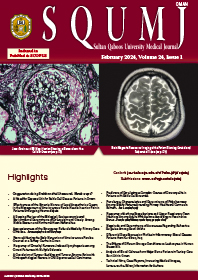Main Article Content
Abstract
Objectives: This study aimed to analyse the association of tumour budding (TB) and tumour-stroma ratio (TSR) with clinicopathological parameters that can be easily viewed on routine haematoxylin and eosin (H&E)-stained slides to provide an easy and cost-effective method for prognosticating oral squamous cell carcinoma (OSCC). Methods: This study was conducted at the ESIC Medical College and Hospital in Faridabad, India, from July 2022 to October 2022. In patients with histologically diagnosed OSCC, TB and TSR were evaluated via routine H&E-stained sections and correlated with clinicopathological parameters. Statistical analysis was performed using Chi-squared test. Results: A total of 50 patients were included. The mean age of participants was 61 ± 12.72, and the male-to-female ratio was 7.1:1. Most of the tumours were located on the tongue (46%), followed by the buccal mucosa (26%), gingivobuccal sulcus (12%) and retromolar trigone (8%). The palate and alveolus were the other sites involved, constituting 4% each. TB and TSR were both found to be significantly associated with the tumour grade, lymph node metastasis and tumour size. A highly significant correlation was also found between TB and TSR (P = 0.001). Conclusions: Both TB and TSR can be easily evaluated on routine H&E sections; they are highly reproducible and were found to be reliable independent prognostic markers in OSCC. Therefore, this simple and cost-effective method of prognostication, which is currently lacking in clinical practice, will help clinicians to identify patients with poor prognosis and thus individualise their treatment plan.
Keywords: Tumour microenvironment; Oral Squamous Cell Carcinoma; India.
Article Details

This work is licensed under a Creative Commons Attribution-NoDerivatives 4.0 International License.
